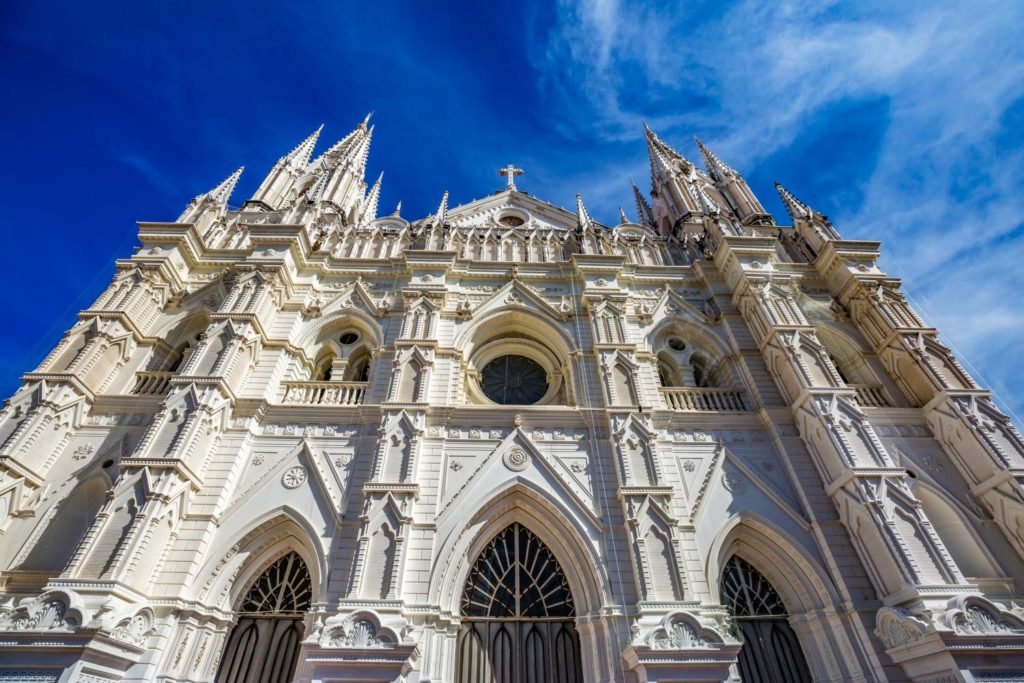El Salvador’s Land of Volcanoes
For millions of years, the Caribbean and Cocos tectonic plates have collided beneath El Salvador.
The resulting pressure uplifted the Caribbean Plate and melted the subducted Cocos rock, sending plumes of steam and mountains of lava to the surface through fissures.
Today, El Salvador’s rugged backbone can be described as a land of volcanoes, boasting over 100 volcanoes, many of which can be visited up-close.
Cordillera de Apaneca
In the west, the coffee-covered Cordillera de Apaneca consists mainly of volcanoes.
The tallest is Volcan Santa Ana—known locally as Ilamatepec or Mother Mountain.
From it’s summit—7,811 feet above sea level—you can view four nested calderas and a bright green sulfuric lake.
Santa Ana, Izalco, and Cerro Verde
Santa Ana and its two sister volcanoes—the black-coned Izalco and the thickly forested Cerro Verde—form the core of Los Volcanes National Park.
Guides and prearranged permits are essential for hikes of Santa Ana and Izalco, while Cerro Verde’s trails are open and freely accessible.
Coatepeque Lake and Isla Teopan
Just a short drive east, you’ll find Coatepeque Lake.
The lake fills a massive, low-lying caldera, formed over 50,000 years ago.
Visitors can explore the lake by boat, stopping to hike on Isla Teopan—the primary island and a Maya ceremonial site.
Surrounding attractions include coffee tours and hot springs.
Quetzaltepec Stratovolcano
One of Central America’s most accessible volcanoes is San Salvador or Quetzaltepec, a stratovolcano on the northwestern edge of San Salvador.
Here, visitors can peer down into a huge crater, rewarded with views of a newly-formed cinder cone.
The surrounding park also has hiking trails and botanical gardens.
San Vicente Volcano
The country’s second highest volcano—San Vicente or Chichontepec Volcano, at 7,159 FASL—is an hour’s drive east of San Salvador.
Trails lead through cloud-forest to the twin summits.
Here you’ll find two craters, steaming fumaroles, boiling mud pots and cooled lava flows.
Volcan Chaparrastique
El Salvador’s most active volcano is Chaparrastique—a conical giant, rising from the plain southwest of the town of San Miguel.
The volcano still emits clouds of white vapor, with most nearby residents recalling at least two major eruptions.
What to do in The Land of Volcanoes
Full-day guided hikes to the summits can be arranged, allowing vertiginous views of the deep central craters. Most hiking tours take a full-day. Sun protection, layered clothing, and shoes with chunky tread are recommended.
What is the Weather Like?
In the highland realm of El Salvador’s volcanic heart, the air stays cool and crisp—daytime highs hover around 16–24 °C, while mornings and evenings can dip to a brisk 6–8 °C. The region follows the country’s two seasons: a clear, dry season (November to April) offers dry trails and sweeping volcano views, while the May–October rains bring afternoon storms that cloak peaks in mist and drape the landscape in lush green—stunning for atmospherics, but best enjoyed by those prepared for sudden showers.
Getting There
Start your journey today
LANDED delivers the finest in custom, private travel to Central America, South America, and Antarctica. These regions are our passion; we know them first-hand and by heart. Speak with one of our travel designers and let us create a tailored itinerary for you in El Salvador.
How to combine The Land of Volcanoes
Have some extra time? Here are some options for you to combine with.



